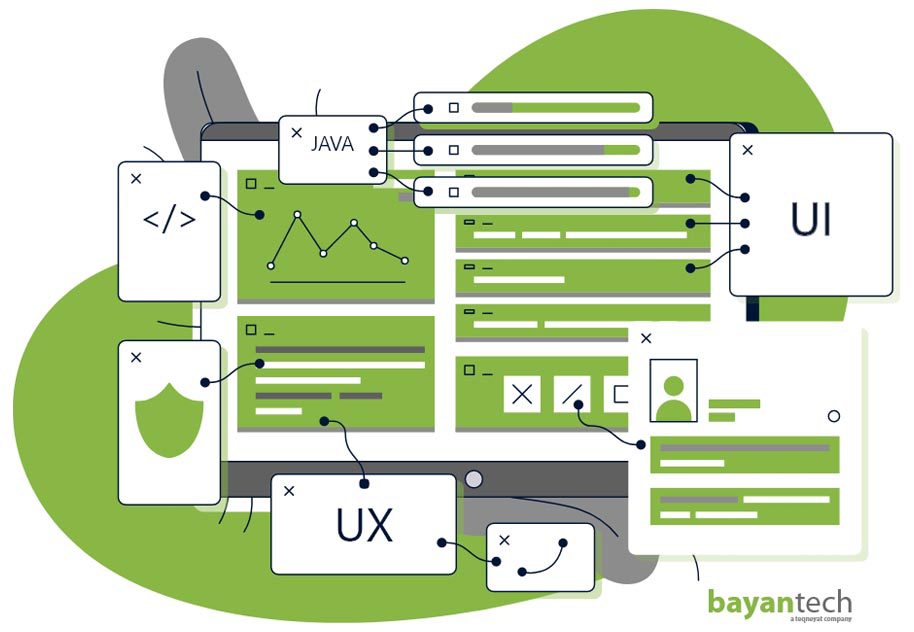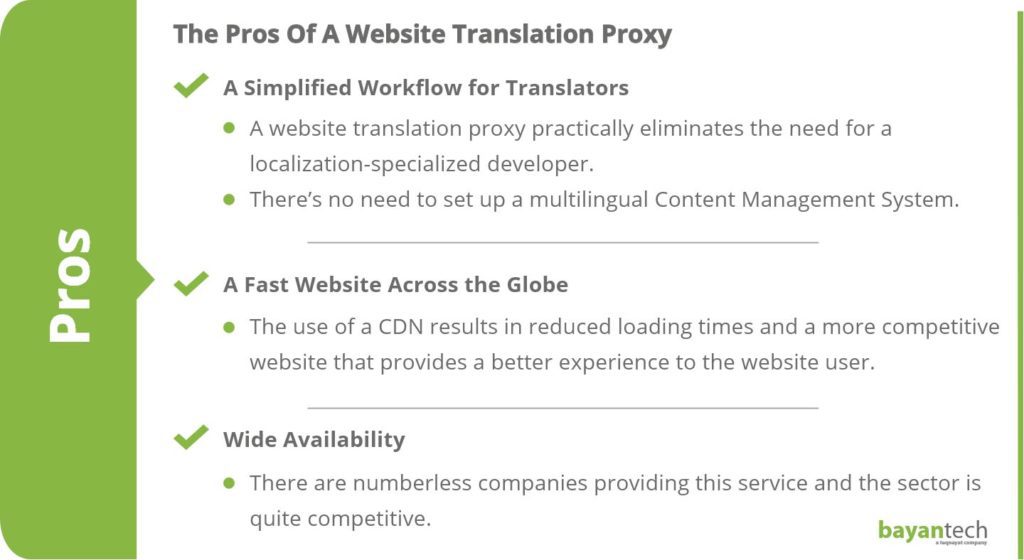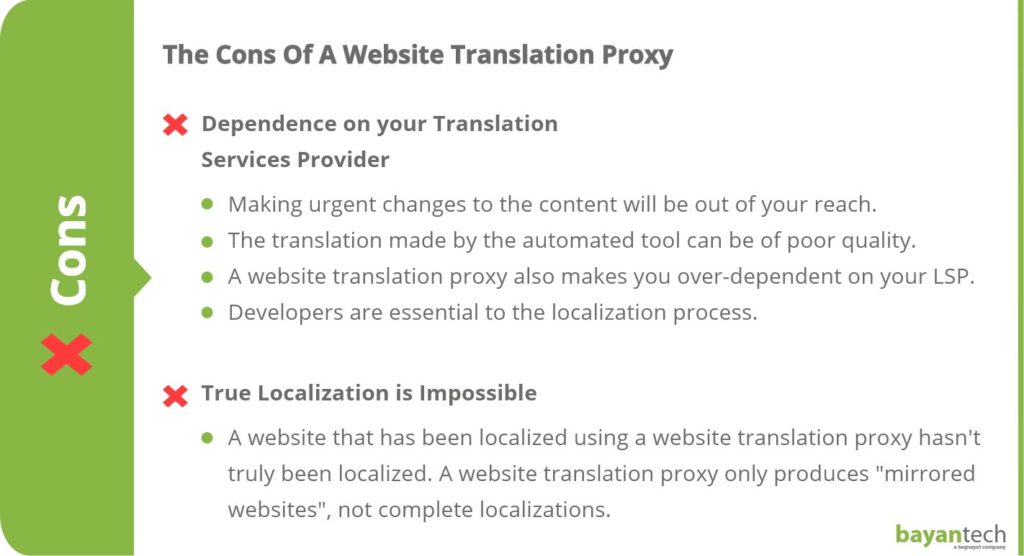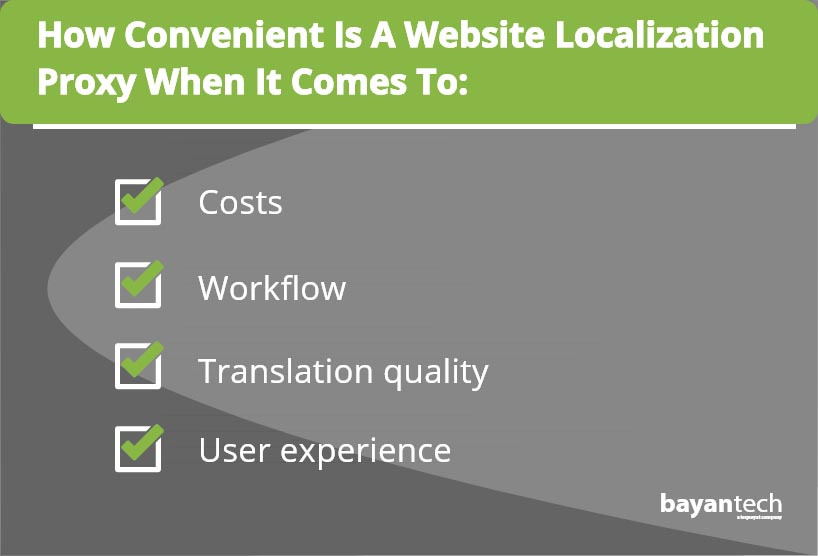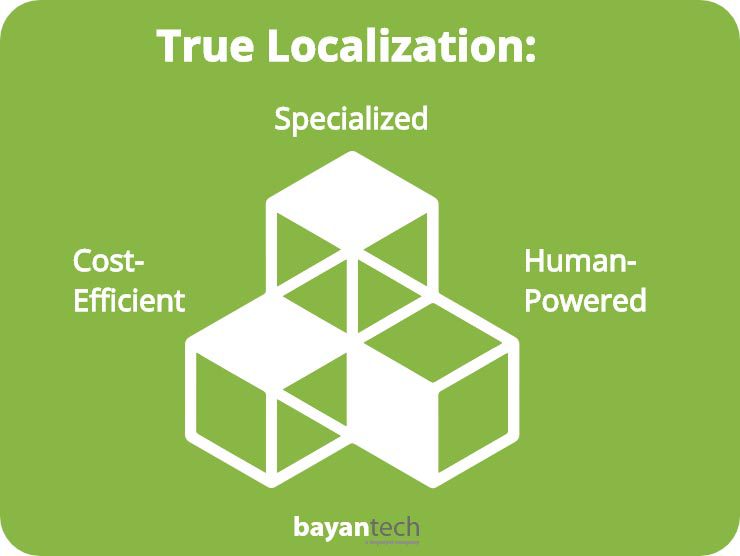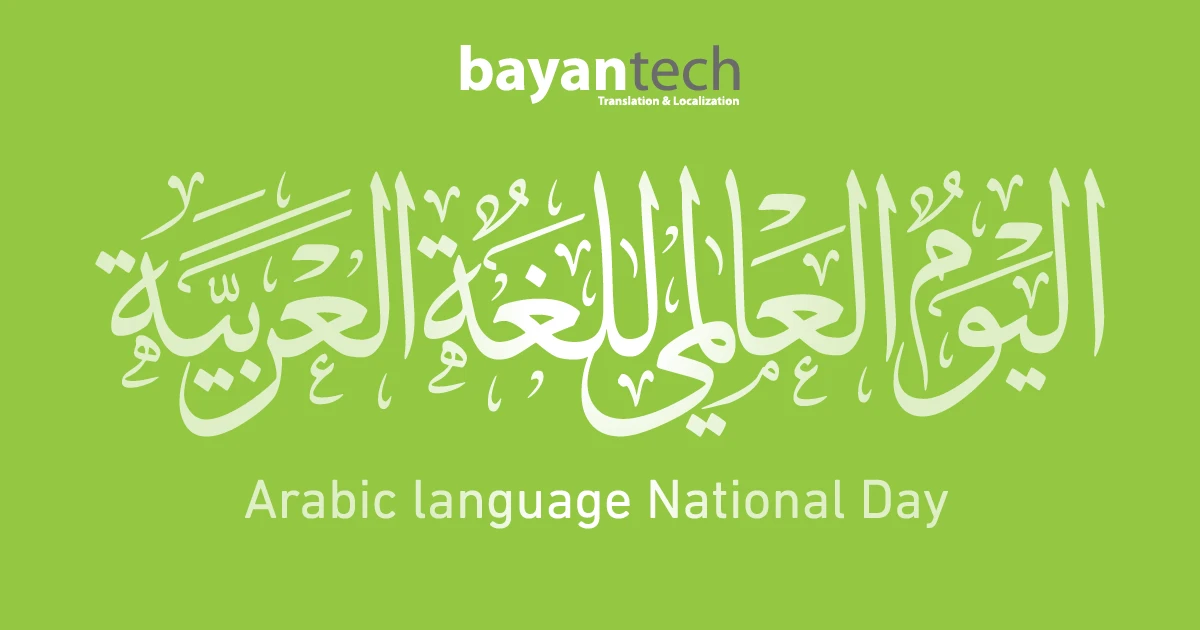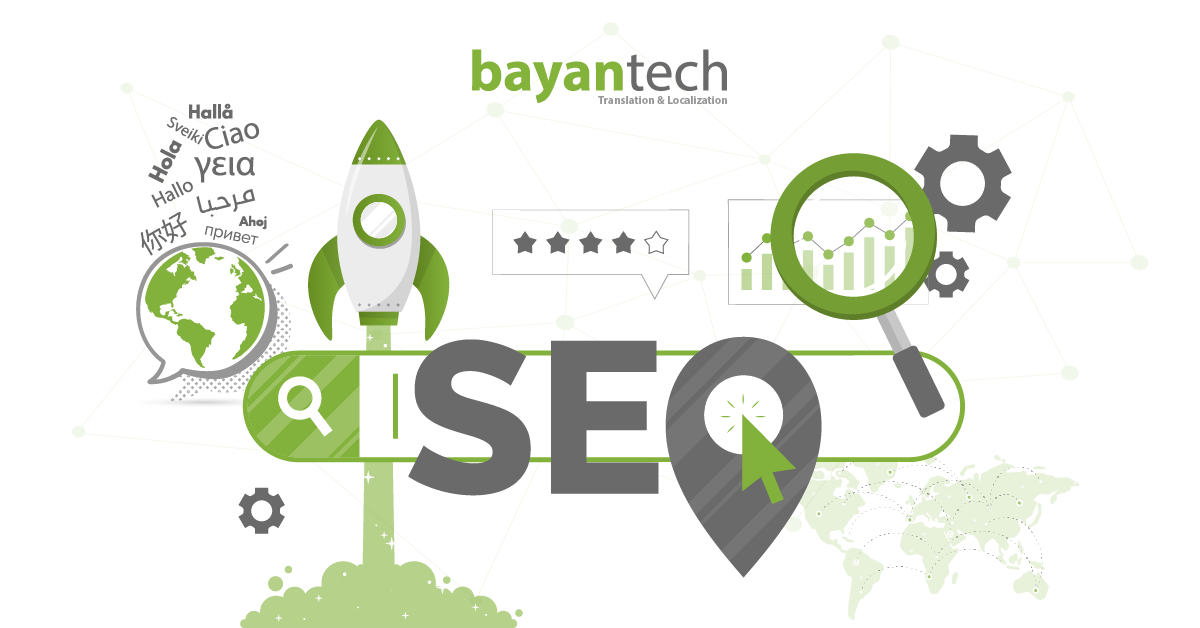If your company is expanding internationally, your website is probably one of your key marketing concerns – and rightly so. A properly optimized website that offers great content wrapped in a beautiful and functional UI (user interface) can convert up to 11% of its visitors. If your website has 10 thousand visitors a month, you could be looking at over one thousand conversions from your website alone. Especially if you’re expanding to new markets, this isn’t an opportunity you can miss out on.
When looking for website localization services, you’re being introduced to numerous new concepts. And it can be complicated to digest all this new information and turn it into a localization strategy that works for your business.
From a technical standpoint, there are numberless ways to make your localized website a reality. One of them is through a website translation proxy. But, what is a website translation proxy? How can we know if it’s the right option for us? In this post, we’ll take a look at the basics of proxy-based website translation, its downsides, and its benefits.
What is a Website Translation Proxy?
Simply put, a website translation proxy is an intermediary server in which a translated version of your website content will be located. So, when a user from a certain locale visits your website, the proxy will, to put it in simple terms, insert the right content into your UI.
A website translation proxy “scrapes” your current content and uploads it to your linguists’ translation tools. After translation, the language team will be able to upload the translated versions of your website straight from their translation management software. Acting as an intermediary, a proxy makes it possible for translators to work on your website’s content while keeping you in full control of it, and without the need for a multilingual Content Management System (CMS).
Translation vendors working with translation proxies will often use technology that will allow them to detect changes to your original website and adapt the translated sites accordingly
Frequently Asked Questions about Translation Proxies
If you’re considering a translation proxy for your website, there are some questions you’re probably asking. Let’s take a look at the three most common:
“Will there be several versions of my website?”
No, there won’t be several versions of your site. Using a website translation proxy means that you will never need to operate separate websites. Instead, a single version of the platform will provide the source code on which the content written in different languages will be mounted.
“What about multimedia content?”
While some tools and plugins can make the replacement of multimedia content easier when using a translation proxy, images and video can’t be translated automatically. This means that new audiovisual content would need to be made for your website to be fully localized. A website translation proxy isn’t the end-all, be-all of website localization. Other types of localization services will be necessary to complement it.
For instance, if you have video tutorials explaining how to make the most out of your product, you’ll probably need subtitling services, to say the least. The same goes for infographics, which should be localized separately.
“Is a website translation proxy cost-effective?”
In the short-term, a website translation proxy can be considered the most cost-effective option. The linguists working at your proxy translation vendor will probably work with software that allows them to select and edit the content without touching the code. This significantly decreases the amount of work needed to translate the content, by practically eliminating the need for a developer to step in.
However, the infrastructure needed to keep the proxies running in the long term can be very expensive, and this becomes a more significant issue if your website traffic (or content volume) increases. It’s also worth mentioning that the set up of a website translation proxy and its initial usage in localization can cost approximately 10 thousand US dollars. While a website translation proxy may not be the most costly option, it still requires a substantial initial investment.
The Advantages of the Proxy Solution
1. A Simplified Workflow for Translators
As we explained a few paragraphs above, the use of a website translation proxy practically eliminates the need for a localization-specialized developer, making it possible for translators to work directly on the content. The possibility of connecting translation tools with the website without a technical expert reduces costs, prevents bottlenecks, and puts linguists in control of the process.
On the other hand, since the proxy scrapes and manages the content, there’s no need to set up a multilingual Content Management System. Therefore, development costs are also reduced on that front.
2. A Fast Website Across the Globe
Many translation proxy services use content delivery networks (CDNs). A CDN is a network of proxy servers across the world that host the content of a website. This allows users from anywhere to load the site from servers that are close to their geographical location.
The use of a CDN results in reduced loading times, and a more competitive website that provides a better experience to the website user. A CDN also grants redundancy for the system. This means that if one server shuts down or experiences connection issues, the website can still be accessed. A CDN is a guarantee for high uptime. Regardless, it’s worth mentioning that your website doesn’t need a website localization proxy to use a CDN. A website that was localized through a multilingual CMS or by any other means can still leverage the power of a CDN (Cloudflare, for example). Therefore, in our present day, a CDN isn’t as much of a competitive advantage as it could have been a few years ago. In this day and age, it’s odd for a website not to use a CDN
3. Wide Availability
A potential benefit of choosing proxy-based website translation solutions is the wide availability of such an option. There are numberless companies providing this service and the sector is quite competitive, so you won’t have much trouble finding a vendor, if you decide this service is for you. But, in spite of the aforementioned benefits, a website translation proxy isn’t the best solution for all businesses.
The Shortcomings of a Website Translation Proxy
Let’s take a look at this method’s shortcomings, and why this may not be the best option for you.
1. Dependence on your Translation Services Provider
If you’re not a specialist, accessing the proxy will be impossible for you as a website owner, so making urgent changes to the content will be out of your reach. This can be problematic if, for example, the changes are made when there’s no one from the Language Service Provider (LSP) available to translate the content in real-time. This may be due to managerial mistakes on the LSP’s side, or due to time zone differences. Certainly, many translation tasks can be automated, and the server-side version of the website will alert the translators if any change has been made. But the translation made by the automated tool can be of poor quality. A few hours (or even days) may pass before the mistranslation is fixed, and by that time, your brand’s image could already be hurt.
A website translation proxy also makes you over-dependent on your LSP: to effectively translate the website to your target language or languages, you have to cede control of the translated content to the LSP. Then, they will build a Translation Memory (TM) which will hold a database of your content. The Translation Memory needs to be updated and maintained over time to prevent a degrading translation quality. This TM can be difficult to export as it is integrated into the proxy’s system, thus making it impossible to use those translations if you want to switch to a different proxy service provider.
Using a website translation proxy means ceding control over your content, which may be problematic for numberless reasons. For example, you may want to change LSPs, and partner up with a company that provides other types of localization services. In that case, the migration of your content will be absolutely out of your control. In fact, you may need to re-translate your existing material for your new localization efforts.
This takes us to the greatest downside of a website translation proxy: Developers are essential to the localization process. Without the ability to reimagine your website from the ground up, you’re bound to only make superficial changes. What if your target market demands more?
2. True Localization is Impossible
Taking a look at some website localization best practices is enough to understand that localization isn’t just about words.
A website that has been localized using a website translation proxy hasn’t truly been localized. Website localization consists of the full adaptation of all aspects of your website, so it meets the needs of your target demographic. By only covering some aesthetic and linguistic aspects of your site, you’re falling short and disregarding some subtler customer needs.
A website translation proxy may be the best solution for a company website with a few URLs, and very little interactivity. But, if your website has an online store, you’ll need something else. For instance, a tailor-made solution that automatically handles currency conversions.
Technological differences between your home and target markets are also pertinent. For instance, if you’ll expand to a country with poor connectivity, your website’s performance will depend on whether it’s optimized for poor connectivity.
Transcreation is another potential problem area. If you’re investing in content marketing efforts at an international scale, you’re probably partnering up with a marketing team that will investigate and strategically plan your content for each locale. Your new users have different search engine habits. Your new users ask different questions, in a different tone, and want different answers. A translation of your existing content won’t do. Nor will a website translation proxy, which produces “mirrored” websites, not complete localizations.
Sign up to our newsletter to receive the latest blogs and news
Is a Website Localization Proxy Right for You?
After evaluating the pros and cons of a website translation proxy, let’s make a final verdict. How convenient is a website localization proxy when it comes to costs, workflow, user experience, and translation quality?
Regarding costs, websites with little interactivity, and without a great volume of information that should be automatically adapted (prices, for example), may benefit from not having to rely on a developer. But, not having to pay a developer doesn’t mean that we don’t need a developer – or extra translation services that will add up to our translation bills.
For instance, if your website has multimedia content, this content will have to be localized, and that’s a different service from the localization proxy.
When it comes to workflow, a website translation proxy may seem ideal. It eliminates the need to deal with a multilingual CMS, and the translators can work with the tools they feel the most comfortable with. But proxies are often advertised with the promise that all your content will be automatically translated, with no need to communicate with your LSP or plan accordingly.
This may cause varying content availability. A fully coordinated content production and translation process could also be achieved through machine translation. But machine translation outputs have to be extensively edited by humans, to reach an acceptable quality level. A website translation proxy service that heavily relies on machine translation may not be able to guarantee good translation quality.
On the other hand, by failing to consider your website’s layout as something that needs to be adapted and localized, the proxy method is potentially hurting your user experience.
True Localization: Specialized, Cost-Efficient, and Human-Powered
Worldwide commercial expansion requires processes that strike the right balance between flexibility and consistency. Your website, for instance, will need to be recognizably your own but adapting everything that needs to be adapted to your new locale.
Choosing a website translation proxy to translate your website content may sound attractive due to its easy implementation or the fact that it doesn’t need much maintenance on your side.
But there’s no reason to give up specialized, comprehensive localization, especially in very competitive global markets. Minimal translation failures can have a huge negative impact when communicating with your customers, rendering a very expensive proxy service, useless. And when most of the work is done by automated tools, there’s considerable room for error.
Dealing with professionals doesn’t have to consume your whole marketing budget, and a more conventional localization solution will ensure the quality assurance required for such a delicate job. Choosing an experienced translation company for comprehensive website localization services will not only save you money in the long term, but also guarantee that your multilingual websites reach their full potential.
bayantech provides customized website localization solutions!


